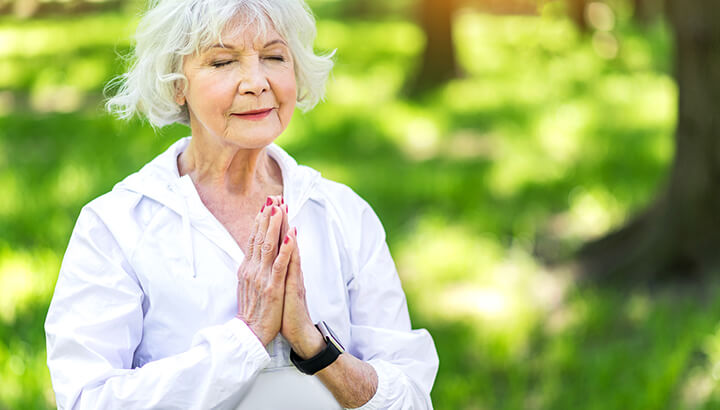Most of us humans are painfully aware that as we age, our systems tend to fray and break down — sometimes slowly, sometimes quickly (such as in the case of injury). Living a healthy and active lifestyle is the best way to slow the aging process and maintain optimal quality of life into our golden years… but time does still take its course.
When it comes to movement, flexibility, and balance, many senior citizens struggle on a regular basis. Moving around and doing normal day-to-day tasks may become painful and difficult, especially for those with osteoarthritis and other joint and muscle conditions. While exercise can help to alleviate pain and restore range of motion, many senior citizens may be unable to do certain types of exercise safely.
There are, of course, forms of exercise that are easier on the body than others, such as swimming and walking. These are great for seniors who feel comfortable doing them. To add to the list of remedies for osteoarthritis complications, researchers have found promising results with a practice known as “chair yoga.” Chair yoga is exactly what it sounds like: yoga poses performed while sitting in a chair, or while standing and using a chair for support.
Research shows significant benefits of chair yoga
A new study performed by researchers at Florida Atlantic University and published in the Journal of the American Geriatrics Society was the first randomized controlled study to test the benefits of a chair yoga program on older and elderly individuals diagnosed with osteoarthritis. To test these benefits, 131 older adults from an HUD senior center in Florida were assigned to either a chair yoga program, or a general health education program. The study went on for eight weeks of twice-weekly 45-minute sessions.
Results showed that the individuals who were placed in the chair yoga group were doing much better after eight weeks than their counterparts in the general health program. They were found to have lower levels of pain, and lower levels of pain interference in their lives. They were also found to be able to walk faster, and were less tired, during the chair yoga program. The reduced pain interference was found to last three months beyond the chair yoga program itself… which displays the long-lasting positive effects of yoga.
Based on these results, the study authors concluded:
“An eight-week chair yoga program was associated with reduction in pain, pain interference, and fatigue, and improvement in gait speed, but only the effects on pain interference were sustained 3 months post intervention. Chair yoga should be further explored as a nonpharmacologic intervention for older people with OA [osteoarthritis] in the lower extremities.”
Furthermore, study co-author and co-principal investigator Juyoung Park commented:
“With osteoarthritis-associated pain, there is interference in everyday living, limiting functional and social activities as well as diminishing life enjoyment. The effect of pain on everyday living is most directly captured by pain interference, and our findings demonstrate that chair yoga reduced pain interference in everyday activities.”
It is truly exciting that a safe, natural method that has other benefits for both body and mind had such a positive effect on these senior citizens. Hopefully, more chair yoga programs will become available across the nation (and the world) once this research circulates further.
Who else can benefit from chair yoga?
While most healthy, active younger people can participate in regular yoga classes, chair yoga may be an excellent option for those who are recovering from injuries, disabled, or have certain illnesses which lead to fatigue or reduced ability to stand and balance for long periods of time. It may also be a great activity to try at the office: if you’re stuck in a chair for hours on end, you could throw a few chair yoga poses into your day to stretch (of course, you still need to get up and walk around to break up all of that sitting!).
The benefits of chair yoga could reach far, indeed. If you or someone you know has a health condition, is over the age of 65, or has limited mobility, this is certainly one practice to look further into.
— Meditation Daily







